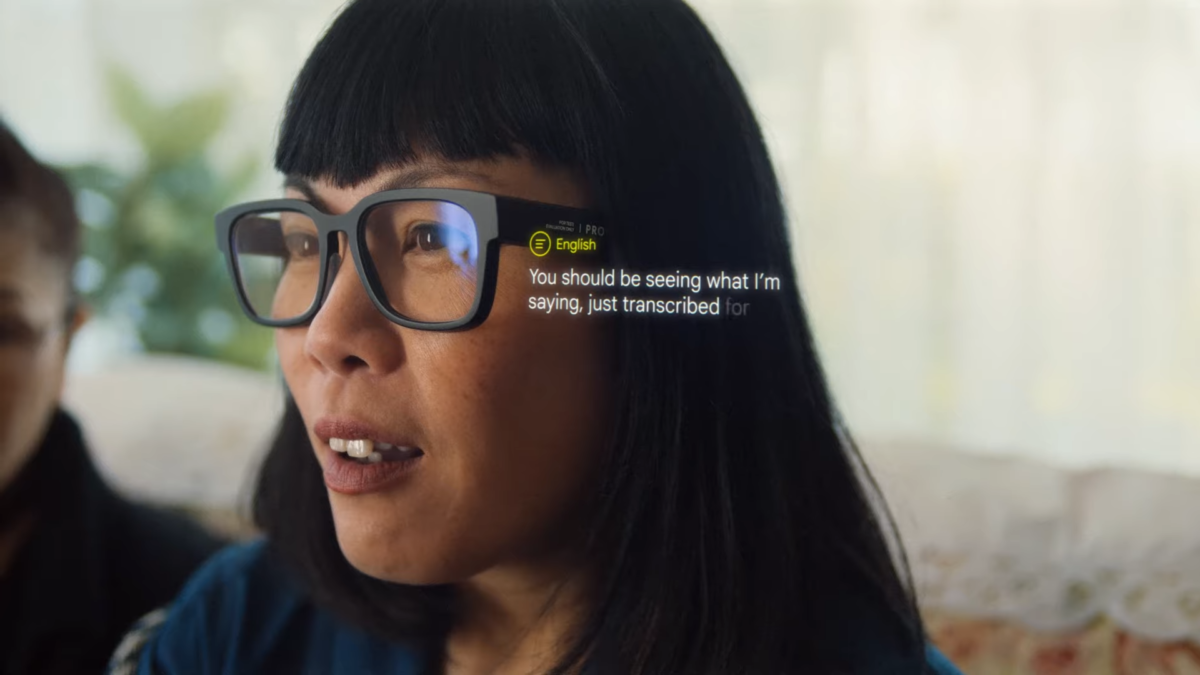Google tests a Google Glass successor, but with one important difference

Ten years after Google Glass, Google is again testing camera glasses in public - with one important difference.
The prototype looks like regular glasses but has a display, microphones, and cameras built in. The device will be tested on a small scale by a few dozen Google employees and selected testers in public places starting in August. That excludes schools and playgrounds, government buildings, health care facilities, religious sites, and social service organizations.
Google is using the prototype to test various applications such as spoken and written language translation and transcription, AR navigation, and visual search. The wearable uses data from the environment to translate a menu or give users directions to a nearby coffee shop with digital arrows, according to Google's blog post.
Google takes privacy seriously, it says
Google Lens and Google Maps have offered such AR functions for years. Now they are making the leap from smartphones to glasses. With the outdoor tests, Google wants to find out how the technology performs under realistic conditions.
At Google I/O in May, the company first teased new tech glasses that translate real-time spoken language and displays it as text in the user’s field of view. The wearable shown in the video is a placeholder and does not correspond to the actual appearance of the glasses.
Google emphasizes that the test subjects cannot take photos or videos with the prototype. The information recorded by the cameras and microphones is only used for AR functions - an important difference to Google Glass. The tech glasses, unveiled in 2012, were met with public resistance and led to a privacy debate after testers were called "Glassholes," thrown out of bars and even physically assaulted.
In its second attempt, Google wants to protect the privacy of the testers and the environment. All testers undergo rigorous training on behavior, privacy and security, Google writes in its FAQ. An LED light informs people nearby when image data is stored for "analysis and troubleshooting." These must be deleted upon request. It is understandable that Google is playing it safe after the Google Glass debacle.
Meta tests for the AR future since 2020
Meta is taking a much more aggressive approach: In September 2021, the company teamed up with eyewear company EssilorLuxottica to launch Ray-Ban Stories: regular Ray-Ban glasses without a display, but with two cameras that can take photos and videos of the surroundings. Here, too, an LED light indicates when the recording is running. However, this is hardly noticeable in bright daylight.
With Project Aria, Meta has been publicly testing which environmental data the tech glasses need for basic AR functions since 2020. The Aria prototype is packed with sensors, but unlike Google's prototype, it has no display.
Google's new data glasses will likely use technology from Canadian company North. Google bought North, which makes stylish and fashionable data glasses, in the summer of 2020.
The company is also said to be working on an immersive video AR headset, codenamed Iris, that could rival Meta's and Apple's upcoming AR headsets. Market launch is reportedly set for 2024.
Note: Links to online stores in articles can be so-called affiliate links. If you buy through this link, MIXED receives a commission from the provider. For you the price does not change.